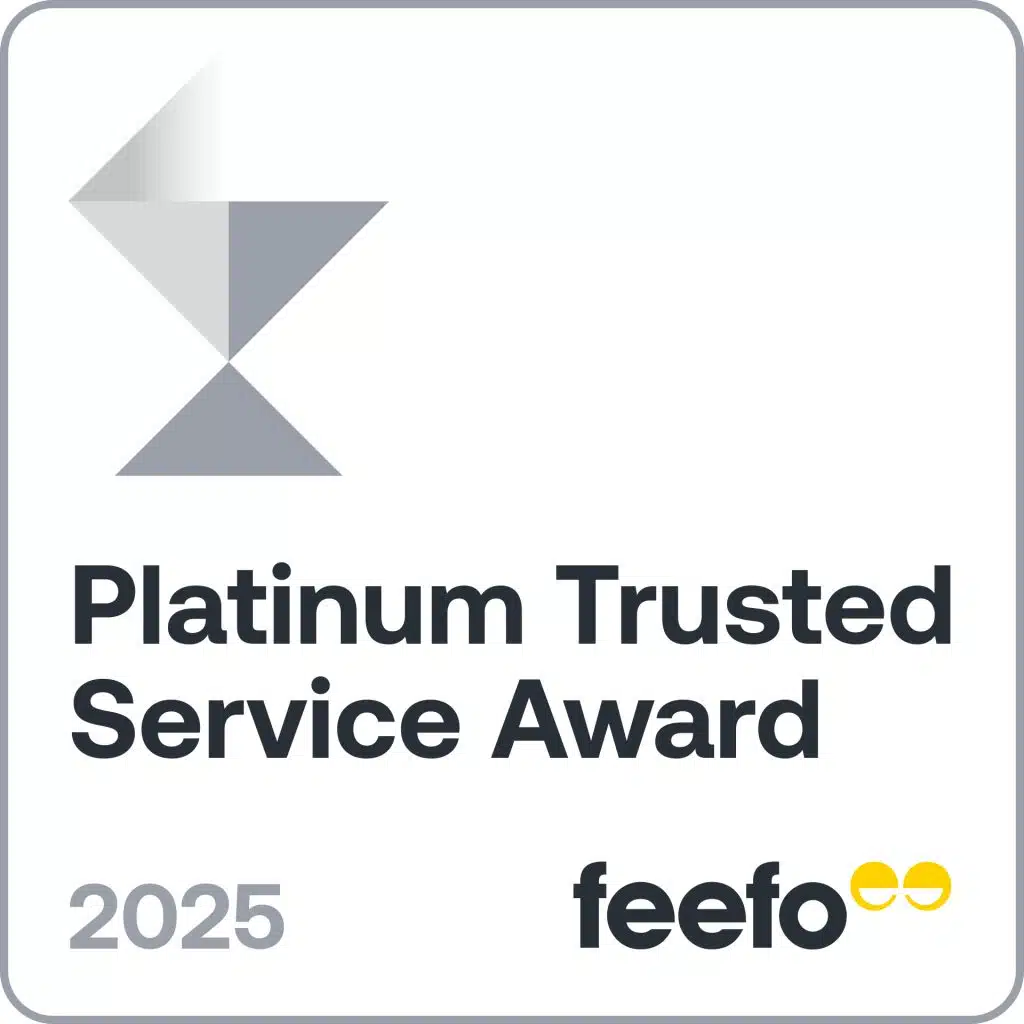When can you refinance a home loan?
There’s no restriction on how soon you can refinance your home loan after you settle it. However, there are several reasons why it’s best to wait at least a year or two before looking to do so.
First, all mortgages come with a range of charges. These can include fees for discharging your mortgage, setting up your new loan with a different lender or, if you’re on a fixed interest rate, exiting your agreement early. This could cost you hundreds or thousands of dollars overall, which might negate the short-term benefit of switching lenders.
Second, each home loan application is recorded on your credit file as an enquiry, which your lender will check. Multiple credit enquiries in a short period can harm your credit score and chances of approval for subsequent loans.
By waiting at least 12 months or more, you’ll give your loan more time to breathe and build up a positive repayment record before moving on to the next one.
Reasons to refinance your home loan
-
Lock in a better interest rate
It may be as simple as securing a lower rate on your home loan. For example, with a $400,000 loan balance and 25 years remaining, you could save $119 per month and over $35,000 in total by switching from a loan at 6.25% p.a. to another at 5.75% p.a., even with a $500 exit fee. If your loan-to-value ratio (LVR) has improved – meaning you’ve paid off more of your loan or your property value has gone up – you may be seen as a lower-risk borrower and qualify for even better rates.
-
Access equity in your home
By refinancing your home loan, you can borrow against your home equity, thereby increasing your loan amount and freeing up more cash. This can be used freely to consolidate debts, fund home renovations or invest in another property. The amount of equity you can access is usually 80% of your home’s value minus your mortgage balance.
-
Remove a guarantor or co-signer
Many homebuyers sign up for their first mortgage with a parent or grandparent as a home loan guarantor. This helps maximise their chances of approval. The only way to remove them from your agreement is by taking out a new loan without them, which may be easier after the first few years of paying off your debt. The same is true if you bought a property with your partner and have since separated.
-
Adjust your loan term
Refinancing can also be used to increase your loan term. It’s a common way to alleviate financial pressure among mortgage payers. Doing so reduces your repayments but will increase the interest you’ll pay overall. Conversely, if you have room in your budget, you can shorten your loan term to slash your total interest outlay.
-
Access additional features
Refinancing can let you switch to a loan offering features your current loan lacks, such as rredraw facilities or offset accounts as well as flexible repayment options. This can help you save on interest, manage your cash flow more effectively and give you greater control over how you repay your loan.

Is your home loan still best?
"Refinancing is crucial to ensure you have the best deal on your mortgage. Banks constantly change their rates, policies and promotions, so you never know what you may be eligible for. The best lender for you 12 months ago may be your fifth-best option today. Whether it’s a limited-time cashback, lower interest rate or your circumstances have changed, there’s no harm in seeing what’s out there. Just avoid enquiring with a lender more than once or twice a year to protect your credit score."

Should I refinance with my current lender or switch?
When refinancing, you have two main options: staying with your current lender (internal refinance) or switching to a new lender (external refinance).
Staying with your current lender is often quicker and simpler, since they already hold your loan and know your history. However, they may not always offer the most competitive rates or the full range of features you’re after.
Switching to a new lender, on the other hand, opens up a wider choice of products and can help you access better rates, features and loan structures – especially if you’re not satisfied with your current loan. However, this option may involve more paperwork and higher costs.
According to ABS, of the 108,519 owner-occupier loans refinanced in the June 2025 quarter, around 60% involved switching to a new lender while the remaining 40% were refinanced internally with the same lender. For investment loans, the percentage of borrowers switching was even higher, with 72% choosing a new lender and just 28% refinancing with their current lender. This suggests that when refinancing, more Australians prefer to switch lenders rather than stay with their current one.
How much could I save by refinancing my home loan?
Depending on the size of your mortgage you could stand to save tens of thousands to hundreds of thousands of dollars by refinancing. To put the potential savings into perspective, here’s how your repayments and overall savings could change on a $500,000 loan with 25 years remaining if you were to refinance from a rate of 6.15% p.a., paying $3,268 a month, to various lower rates:
| Refinanced rate | New monthly repayment | Monthly saving | Overall saving |
|---|---|---|---|
| 6.05% p.a. | $3,237 | $31 | $9,211 |
| 5.90% p.a. | $3,191 | $76 | $22,949 |
| 5.70% p.a. | $3,130 | $137 | $41,120 |
| 5.45% p.a. | $3,056 | $212 | $63,595 |
| Rates are used for illustrative purposes only and aren’t necessarily reflective of the rates you’ll receive on your refinanced home loan. Calculations don’t include additional mortgage break or origination fees. | |||
However, it’s not just the interest rate that impacts the savings on your refinance deal. Other factors include:
- Loan terms: in general, the longer your loan term, the more you’ll pay. When it comes to refinancing, though, having longer left to pay means you may stand to benefit more from switching to a lower rate.
- Loan balance: not only does it cost more to repay a larger home loan, but interest will also be higher. That’s because it’s calculated based on your outstanding balance. If you have two loans with the same interest rate and term but different balances, the loan with the lower balance will cost less.
- Loan fees: you’ll likely have to pay other fees on top of your mortgage’s interest, such as monthly or annual charges, application fees and early termination costs.
- Payment frequency: whether you pay off your mortgage fortnightly or monthly also makes a difference. Because fortnightly repayments add up to the equivalent of 13 months per year, your balance will drop more quickly and reduce the interest you pay slightly. Also, making extra repayments will clear your debt sooner and cut down on interest.
The cost to refinance a home loan
Before switching loans, it’s important to understand the potential costs involved. Depending on your situation, refinancing could cost anywhere from a few hundred to several thousand dollars. This can include exit fees from your current lender (especially if you’re on a fixed-rate loan), as well as application and setup fees for your new mortgage.
Let’s take an example of someone in New South Wales switching from their current fixed rate mortgage (we’ll call it Mortgage A) to a new variable rate mortgage with a different lender (Mortgage B).
Mortgage A has an outstanding balance of $350,000 and 20 years remaining on its term. The interest rate was fixed at 5.75% p.a. for four years, of which there are two years left to run. Here are the fees someone can expect to pay for refinancing from Mortgage A to Mortgage B:
| Cost | Fee |
|---|---|
| Mortgage A closing costs | |
| Fixed rate break cost | $4,200* |
| Mortgage discharge fee | $400 |
| Mortgage B setup costs | |
| Application fee | $600 |
| Valuation fee | $300 |
| Mortgage registration/deregistration (NSW) | $351.40** |
| Title search fee (NSW) | $18 |
| Estimated total refinancing cost | $5,869.40 |
| * Break cost calculated based on a lender offering a four-year fixed rate of 5.15% p.a. at the time of refinancing. ** Mortgage registration, deregistration and land title search fees are specific to NSW and reflect charges for the 2025–26 financial year. Note: the break cost and discharge, application and valuation fees are all examples for illustrative purposes. You may be charged less or more for each of these when you apply to refinance your home loan. |
|
In the scenario above, the total cost of refinancing adds up to $5,869.40, impacting any savings you stand to make.
There are also other potential drawbacks to be aware of, namely the time and effort involved (although a broker can help reduce this), and the impact on your credit. Refinancing can take several weeks and may require paperwork, property valuations and back-and-forth with lenders. Your credit score might also take a minor hit, as most lenders will perform a credit check during the process. It’s important to weigh up all these factors to decide whether refinancing is the best move for you right now.
Documents you’ll need for a home loan refinance
The documents required for a home loan refinance are very similar to what you were required to produce when you first bought your home. These include:
- Sufficient ID, such as a combination of your passport, driver’s licence, birth certificate, Medicare card and more
- Your most recent payslips (at least two in most cases) or tax returns if you’re self-employed
- 90 days of bank statements from your transaction and savings accounts
- Information about your living expenses (these can be estimated by your mortgage broker)
- Information about your current job, including your title and how long you’ve been there
- Information about your home loan, including the balance and term remaining
- Any outstanding liabilities beyond your current home loan, such as a HECS debt or other personal or car loans
- Information about your property, including its value, location and ownership (whether it’s solely owned by you or others)
If you’re refinancing with the same lender, you may not need to supply all of the above documents again. Depending on how long ago you took out your initial home loan, your lender may still have things like your ID on file. They’ll also have your financials readily available if you moved your banking over as part of your mortgage.
How does my deposit work when refinancing my home loan?
While a cash deposit is required on your initial home loan (unless you applied with a guarantor who secured the agreement with equity in their property), this isn’t typically the case with a refinance. Over the time spent paying off your mortgage, you’ll have likely built equity in your property, which will also be impacted by any increase in its value over your repayment term. This equity will serve as the minimum 20% deposit required to avoid paying lenders mortgage insurance (LMI) on your new home loan.
However, there are situations where you may have taken out your home loan initially with a smaller deposit. This may have been the case through a guarantor, government grant such as the First Home Guarantee, the now-defunct First Home Loan Deposit Scheme (FHLDS) or simply by paying LMI. If you haven’t built up enough equity in your property since the point of purchase to cover a 20% deposit, you’ll be required to pay LMI again if you have no guarantor attached.
Why apply for a home loan with Savvy
Help throughout the process
You'll be matched with an experienced mortgage broker who'll handle all the hard work for you from start to finish.
Trusted lenders
With a panel of reputable mortgage lenders, you can rest assured you'll be comparing high-quality options with your broker.
Paperless quote process
You can fill out a simple online quote via our form without having to worry about sorting through heaps of paperwork.
How to refinance your home loan with Savvy
-
Apply online
Complete our simple home loan enquiry form.
-
Discuss your options
Your Savvy mortgage broker will help you find the right loan and lender.
-
Submit your application
Your broker will help prepare and lodge your application.
-
Property re-valuation
The lender may check your home’s market value.
-
Get approved
Once your lender is satisfied, your loan will be formally approved.
-
Settle your new loan
Sign documents, settle the new loan and pay out the old one.
Home loan refinance tips
-
Be clear about why you’re refinancing
Whether it’s lowering your interest rate, consolidating debt or unlocking equity for renovations (or a combination), having a clear purpose helps you stay focused and avoid unnecessary borrowing.
-
Know your home’s current value
Understanding your property’s market value is key to determining how much equity you can access. While professional valuations provide the most accurate assessment, you can also research recent sales in your area or ask a real estate agent for an estimate.
-
Review your existing loan
Take stock of your current home loan terms, including your balance, interest rate and any fees associated with breaking your loan early, to determine whether refinancing is worth it.
-
Check your credit score
A healthy credit score improves your chances of approval and helps you secure the best interest rates. Review your credit report to identify any inaccuracies and address them before applying.
-
Consider the timing
If you’ve recently taken out your loan, early termination fees might make refinancing less cost-effective. Similarly, refinancing during a rising interest rate market could lock you into a higher rate, so weigh up your options carefully.
Home loan refinance offers
Many lenders offer incentives for refinancing your home loan with them. These include:
Home loan cashback deals
The most common refinance offer from lenders is a cash incentive to sign up with them. Once your refinance is completed, you can have the money transferred to your account to use however you like. In many cases, these deals range from $2,000 to $4,000. For example, at the time of writing in September 2025, ME Bank offers $3,000 cashback when refinancing $700,000 or more with an LVR of 80% or less.
It’s important to note that you should carefully review the home loan itself when deciding on which deal is best for you. Although a cash boost is an attractive offer, it might not be worth it if that lender charges a higher rate or fees.
Introductory interest rates
Although not specific to refinancing, this can ber deal offered by lenders. Introductory rates – also known as honeymoon rates – are typically set at a lower level for a short period before returning to a higher rate thereafter. This means you can take advantage of initial savings on your loan. However, due to regulatory changes at the start of 2025, lenders now have to assess applicants differently if they are applying for a mortgage that has a honeymoon rate, by assessing them against the rate after the honeymoon period.
Like cashback offers, you should crunch the numbers first to see if the initial period of savings works out in your favour in the long run. There’s no use going for it if you’ll end up paying more overall.
Fee waivers
The fees that come with a home loan can stack up quickly, so it’s worth checking what you’ll need to pay – and whether any can be waived. Some lenders may waive certain fees as part of a refinance offer. For example, since 2019, NAB has waived the $600 application fee on its Base Variable Rate Home Loan for eligible refinancers. Additionally, you or your mortgage broker may be able to negotiate to reduce or remove fees when refinancing your home loan.
Home loan packages
While not specifically targeted at refinancing, some lenders offer bundled home loan packages that combine your mortgage with other financial products – such as transaction accounts, credit cards or insurance – in exchange for a single annual fee. These packages can offer added perks like discounted interest rates, reduced or waived fees and greater convenience. For example, as of September 2025, St. George’s home loan package offers a 2.32% p.a. discount on owner-occupier loans and waives lending and monthly fees, all for a $395 annual package fee. This kind of deal may suit borrowers who already hold multiple products with the same bank.
Types of home loans
- Reserve Bank delivers 0.25 percentage point cut to cash rate in second interest rate reduction of 2025 - ABC News
- Lenders cut rates ahead of expected RBA move - Australian Broker
- Mortgage Insights | Cheaper financing & government support drive resurgence in home loans - PEXA
- Lending Indicators - Australian Bureau of Statistics
- 2025/26 Fees Update - NSW Land Registry Services
- First Home Guarantee - Housing Australia
- Refinance with the right home loan - ME Bank
- Prudential Practice Guide - Australian Prudential Regulation Authority
- Basic variable rate - NAB
- Home loan package - St. George
















